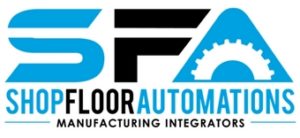Maintenance, particularly on the shop floor, involves expensive machinery – which translates into high costs for actions like repair work. These costs can represent anywhere from 15-70% of expenses, says IEEE. But maintenance costs may not even be the biggest liability.

Inefficient maintenance processes, like manual data collection, contribute to unplanned downtime and costs, according to Forbes.
For companies with strict quality standards and challenging customer expectations, the cost of a nonconformance, rework or even rejection can be enough to draw the attention of executives due to the shipping, additional labor, materials and reallocated machine time required to correct the defective product. This says nothing of the damage to the customer relationship and the impact on their own tight schedule. It behooves manufacturers, then, to ensure shop floor equipment is always performing optimally with minimal downtime.
The Move Past Manual Downtime Tracking
To do so effectively, manufacturing machinery must be continuously monitored. Today’s smart factory showcases plants with modern machine monitoring software, like Scytec DataXchange, which replaces previous steps of manually tracking, handwriting or physically keying in cycle times, set up times, downtimes, costs and reason codes, and then piecing this data together to understand trends, performance and opportunities for improved efficiency. While these manual processes were time- and labor-intensive to compile, report and analyze, they were also often riddled with inaccuracies, in addition to the time delays that further hinder a company’s ability to react quickly. In fact, Forbes specifically cites these types of inefficient maintenance processes as bad attributes that contribute to unplanned downtime and costs.
Bigger Business Benefits
The utilization of equipment monitoring software becomes crucial, therefore, for businesses working towards the goal “to prolong production performance until it reaches a point that the machine requires complete replacement due to wear and tear or technology change, if justified,” writes Salman Taghizadegan in Essentials of Lean Six Sigma. But the benefits of equipment monitoring systems extend past precise predictive maintenance. Through Enterprise Resource Planning (ERP) integration, ideal machine monitoring software can capture and populate data, like these, for an even bigger business-wide impact:
- Actual set-up and run times. By comparing your estimates to your actuals, you’ll increase the accuracy of your job costing to give you a better handle on your margins and overall profitability. The visibility afforded by these actual times will allow for easier and more reliable planning and scheduling, as staffing requirements become predictable.
- Machine statuses. Uptime and downtime records and notifications to maintenance, production and management can ensure service is planned for and executed when – and exactly – as needed.
- Completed quantity. Inventory of raw materials, intermediates and finished goods can be affected in real-time by machine processing, as it occurs.
- Scrap quantity. Material requirements may be altered based on the volume of actual scrap produced, adding to the dependability of planning and scheduling.
- Scrap codes. Opportunities to reduce waste may be presented through reason code analysis.
While machine monitoring software offers a lot towards optimal maintenance management, its integration with ERP is the lift that expands the effect of equipment data across the enterprise to grant clearer visibility into production, inventory, accounting, lean, planning, scheduling – and yes, maintenance – to help drive greater consistency into each process for more effective decision-making. Learn more about connecting your ERP with machine monitoring software by contacting a Shop Floor Automations representative today.


